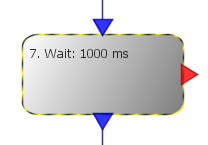Action statement execution paths
The Canvas Editor uses different shapes and colors to
represent different actions.
An action shape will have one input point and one or more
output points. The input point indicates where the flow of
control enters the action and the output points indicate
where the flow of control leaves the action. This section
describes the different action shapes and the corresponding
input or output points that are used to specify the
actions' routing.
Example 1 - If
The following shows the If action,
which provides one input and three output points: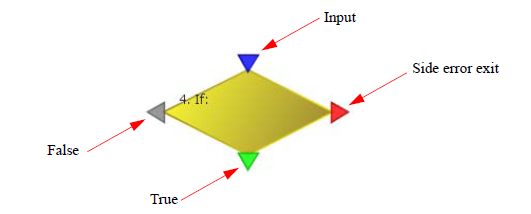
- Input - Indicates the input into the action.
- Side error exit - Indicates an exit route for error handling. You can specify other actions, or use the End Execution (Failure) action, as the exit path.
- True - Indicates the route to take when the expression defined in the action evaluates to True.
- False - Indicates the route to take when the expression defined in the action evaluates to False.
Example 2 - Expression
The following shows the Expression
action, which provides one input and two output
points: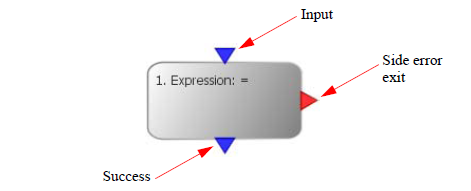
- Input - Indicates the input into the action.
- Side error exit - Indicates an exit route for error handling. You can specify other actions, or use the End Execution (Failure) action, as the exit path.
- Success - Indicates the route to take when the expression evaluates successfully and the output value is stored in the output parameter.
Example 3 - For
The following shows the For action,
which provides one input and three output points: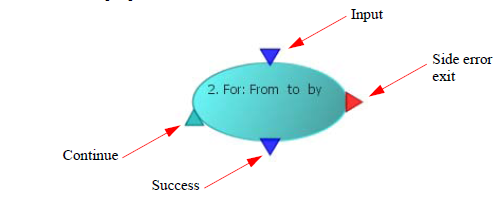
- Input - Indicates the input into the action.
- Side error exit - Indicates an exit route for error handling. You can specify other actions, or use the End Execution (Failure) action, as the exit path.
- Continue - Indicates the first route to take within the loop. When an action routes back to the For action, the loop will continue and increment the counter. Upon completion of the loop the Success route will be taken.
- Success - Indicates the route to take upon a successful completion of the For action counter.
The following example shows a For
action configured with three Set
actions.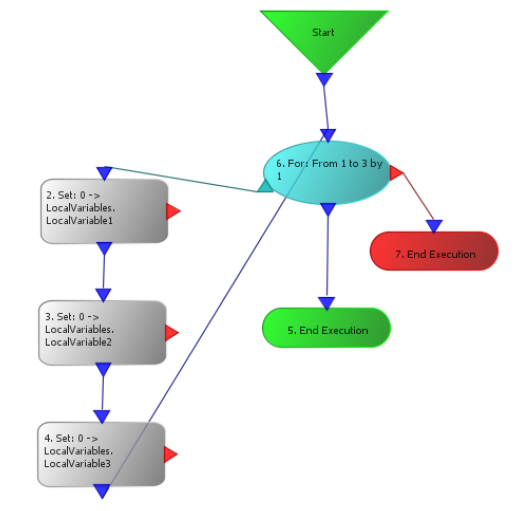
For this example, the starting number of the For action is
set to 1 using a constant. The loop will end execution when
the value reaches 3 (also set using a constant).
Example 4 - Get Bit
The following shows the Get Bit action,
which provides one input and three output points.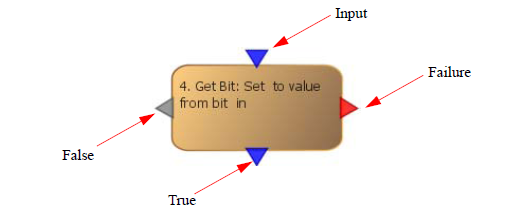
- Input - Indicates the input into the action.
- Side error exit - Indicates an exit route for error handling. You can specify other actions, or use the End Execution (Failure) action, as the exit path.
- True - Indicates the route to take when the expression defined in the action evaluated to True (for the Get Bit action, if the bit is one).
- False - Indicates the route to take when the expression defined in the action evaluated to False (for the Get Bit action, if the bit is zero).
Example 5 - Do Once
The following shows the Do Once action,
which provides one input and two output points.
- Input - Indicates the input into the action.
- First Execution - Indicates the route to take the first time the trigger executes. Subsequent executions of the trigger will bypass this action and move immediately to Normal Execution.
- Normal Execution - Indicates the route to take for all executions after the first execution.
The following shows a Do Once action
configured with three Set actions used for
the first execution of the trigger.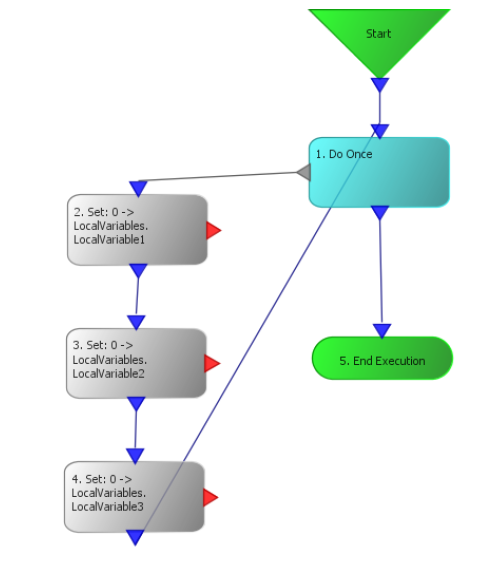
For this example, subsequent executions of the trigger will
bypass the Set actions and immediately end execution.
Disabled Actions
Actions which are disabled (via the context menu command) will appear with a dashed border as shown. These actions will not be performed during execution, instead the action will be skipped and the execution path will continue down the action's success route.
